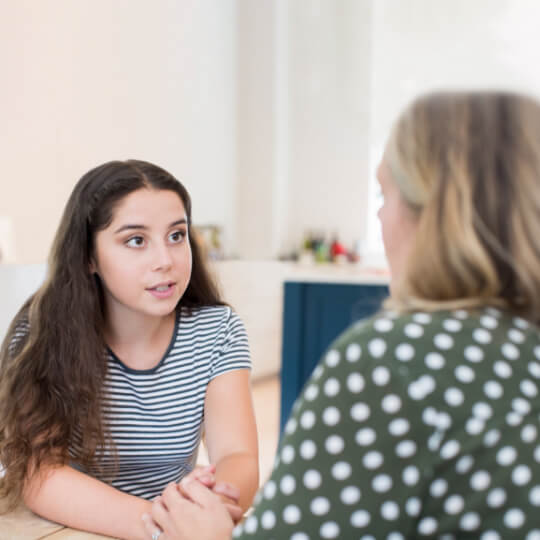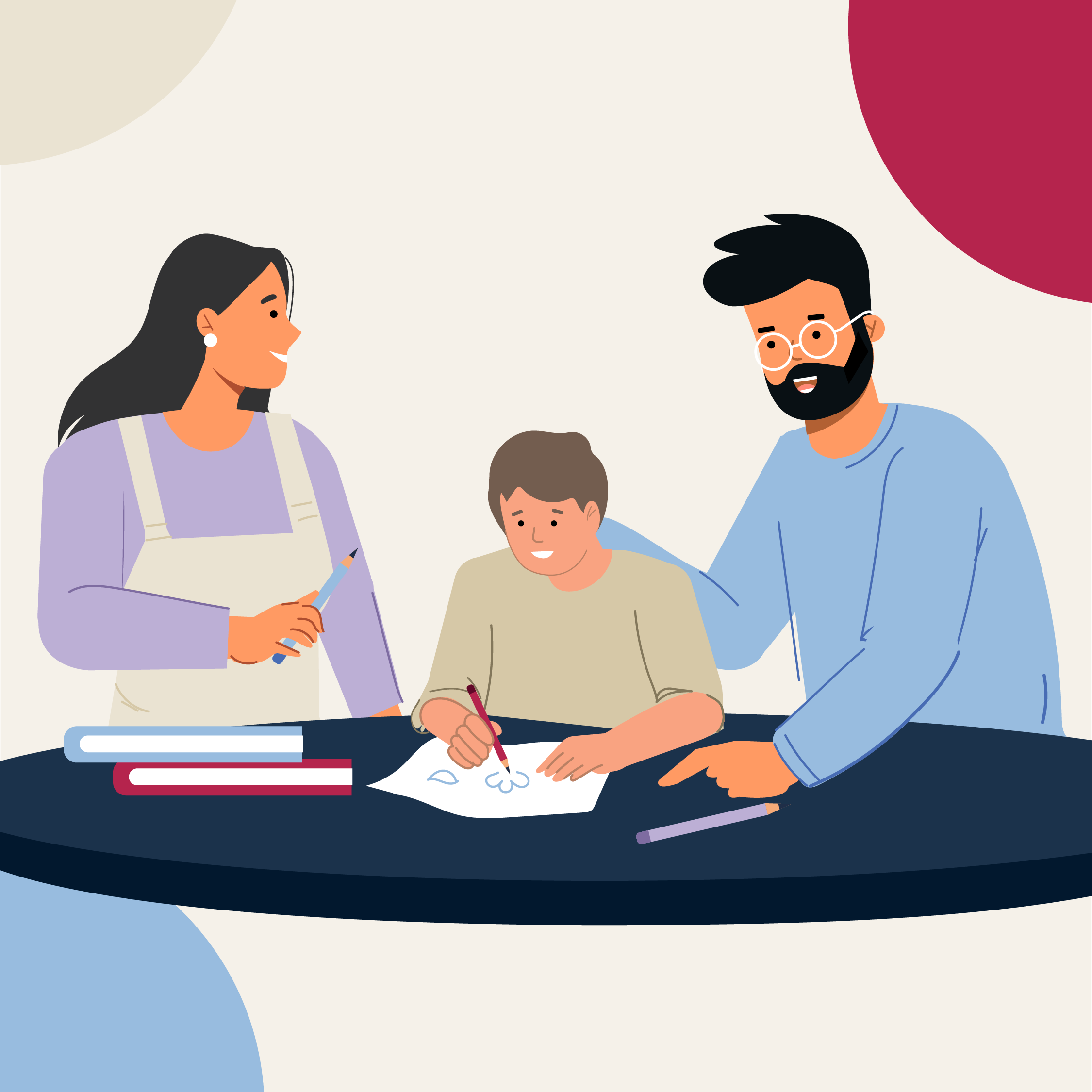Out-of-home care support workers

The internet can provide children and young people with important connections and a sense of acceptance and belonging within a range of communities. But unfortunately those living in out-of-home care can be at greater risk of online harms.
Factors such as life disruptions, the impacts of trauma or a tendency toward high-risk behaviours can mean these children and young people are more likely to experience:
- cyberbullying
- exposure to age-inappropriate content including violent or sexualised photos and videos
- unsafe contact with strangers
- online grooming and child sexual abuse.
The Royal Commission into Institutional Responses to Child Sexual Abuse in 2017 found that children in out-of-home care are at greater risk of being targeted by adult sexual predators. It’s common for these adults to use online platforms to contact and abuse them.
It can be challenging to keep ahead of online safety risks so you can support and protect children in foster care, group homes or residential care. Being responsible for providing online safety guidance and encouraging them to follow it can seem daunting – especially when you also have to steer them through daily activities and complex family circumstances.
As a trusted person in their lives, one of the most important ways you can support children and young people is by letting them know they can come to you for help if they ever feel uncomfortable or unsafe online.
eSafety has legal powers to help protect people who live in Australia from the most serious online abuse and harmful content.
The eSafety website has lots of information about the risks to look out for, how to help prevent them, how to report incidents and how to support children and young people if they have been harmed.

Practice guidance for out-of-home care settings
Reporting and supporting
Cyberbullying
Cyberbullying of children is when someone uses online content or communication to seriously humiliate, seriously harass, seriously intimidate, or seriously threaten a child or young person under the age of 18.
Children and young people in care can be at risk of cyberbullying because others see them as ‘different’. The cyberbullying can include many types of behaviour, such as posting hurtful or humiliating content or comments about them, spreading nasty online gossip, or excluding them online. Changing schools and living arrangements a lot makes it hard to build the connections and friendships that can help children avoid or deal with cyberbullying.
The first thing to do is help the child report the cyberbullying directly to the online service or platform where it’s happening – you can find links to most in The eSafety Guide. If you don't hear back, you can make a cyberbullying report to eSafety to have the content removed.
Image-based abuse
Image-based abuse is when someone shares, or threatens to share, an intimate photo or video online of you without your consent.
This can include photos, screenshots and photoshopped or fake content. Anyone can be abused this way, but young women are often targeted. They may have shared nudes or sexualised shots with someone willingly at first, or they may have been pressured into sending them. Young people may be less likely to refuse the request if the attention makes them feel good, especially if they have a limited understanding of healthy relationships.
If the person threatening to share the content says they will only stop if money or more intimate shots are sent to them, this is a type of image-based abuse called ‘sexual extortion’.
If someone has shared or threatened to share an intimate image or video of a young person in your care, make it clear to the young person that it’s not their fault. Let them know they deserve to have healthy relationships that are based on trust and respect. Have the online content removed by helping them report it to eSafety.
Unwanted or unsafe online contact
One of the most unsafe types of contact is ‘grooming’. This is when a sexual predator contacts and builds a friendship with a child to gain their trust, to sexually abuse them. The person can be a stranger or someone known to the child. The child may welcome the attention at first and not realise when it becomes unsafe.
Grooming by a sexual predator can happen online through social media, gaming and other accounts that allow public or private contact. The predator may arrange to meet the child offline, then sexually abuse them in person. Or they may sexually abuse them online through explicit conversations, photos, videos or live webcam footage.
Any sexual activity between a child and an adult is child sexual abuse. Sexual activity may be sexual intercourse, sexual touching or sexual acts that happen in person or online. It may involve coercion, force or implied force. Online child sexual abuse is any form of sexual abuse of a child under 18 that has a link to the online environment. Find out more about child sexual abuse online.
If someone in your care is in danger now, call Tripe Zero (000) immediately.
If someone is making a child in your care feel uncomfortable or scared online, help them collect evidence then block the person and report them to the site. If you suspect the child is being groomed or sexually abused online reassure them that they are not in trouble, then report it to the site and to the Australian Federal Police via the Australian Centre to Counter Child Exploitation (ACCCE) website.
If you or anyone in your care finds online content that shows child sexual abuse, you can report it to eSafety and we can take further action to investigate and remove it. This helps combat the trade in child sexual abuse material and the revictimisation of survivors.
Further help
There are many counselling and support services available to help children and young people who are experiencing or impacted by online abuse.
Counselling and support
Kids Helpline
5 to 25 year olds. All issues. Confidential phone counselling available all day, every day. Online chat available 24/7, 365 days a year.
Headspace
12 to 25 year olds. All issues. Phone counselling and online chat available 3pm to 10pm AEST, every day.
Social media changes
As of 10 December 2025, certain social media platforms won’t be allowed to let Australians under 16 have an account. Under-16s are able to see publicly available social media content that doesn’t require logging into an account.
What you need to know:
- As of 10 December 2025, Facebook, Instagram, Kick, Reddit, Snapchat, Threads, TikTok, Twitch, X and YouTube are required to take reasonable steps to prevent Australians under 16 from having accounts on their platforms. See the latest list.
- Most standalone gaming and messaging apps, as well as many services that support health and education, are not affected by the law.
- There are no penalties for under-16s who access an account on an age-restricted social media platform, or for their parents or carers. This is about making the platforms take greater responsibility for the safety of children – they face fines of up to $49.5 million dollars if they don’t take reasonable steps to implement the changes.
Find out more at eSafety’s Social media age restrictions.
eSafety training
eSafety offers online safety training for professionals who work with young people, including those in out-of-home care. This includes youth workers, social workers, counsellors and psychologists.
The training covers:
- online safety issues such as cyberbullying, online pornography, sending nudes and sexting, time online, gaming and unsafe contact
- eSafety’s powers to have serious cyberbullying, image-based abuse and child sexual abuse material removed online
- resources to support the online wellbeing of young people.
Register your interest now, or for more information visit our working with children and young people page and Training and presentations FAQs.
eSafety resources
The Association of Children’s Welfare Agencies (ACWA) was awarded funding as part of the 2020-2021 Online Safety Grants Program. With this funding, the ACWA developed co-designed online training resources for children and young people in out-of-home care and their caregivers. More information about this project can be found at eSafety Round 1 Grants 2020.
Last updated: 05/01/2026